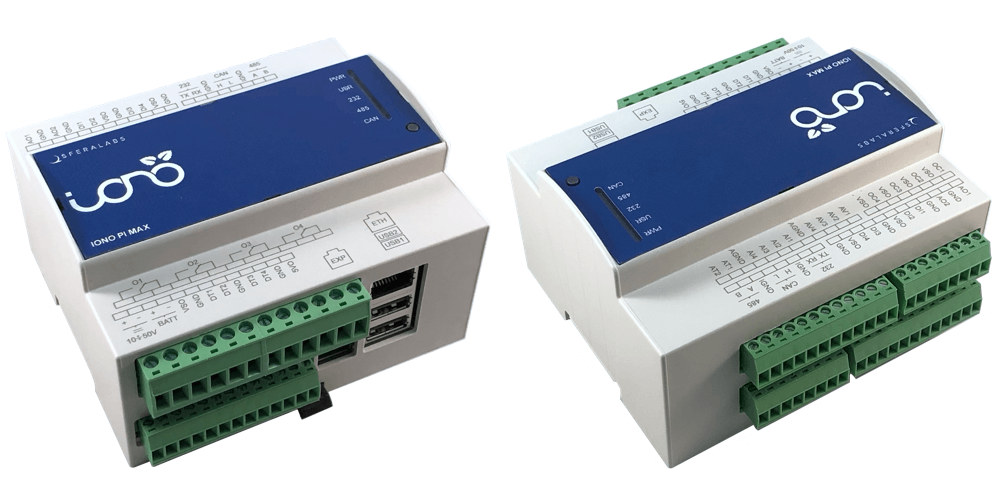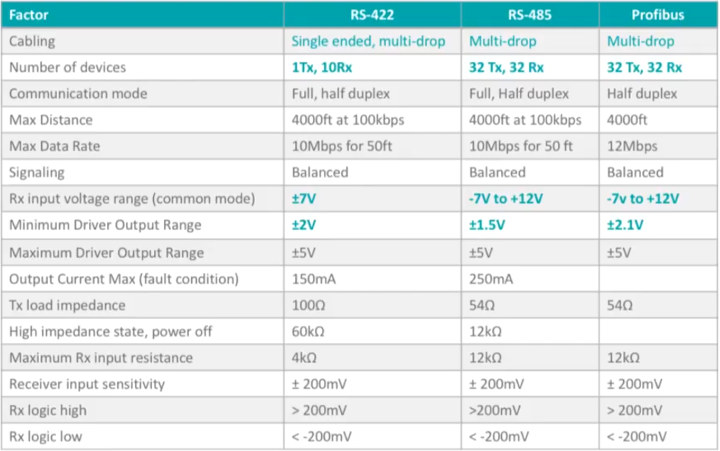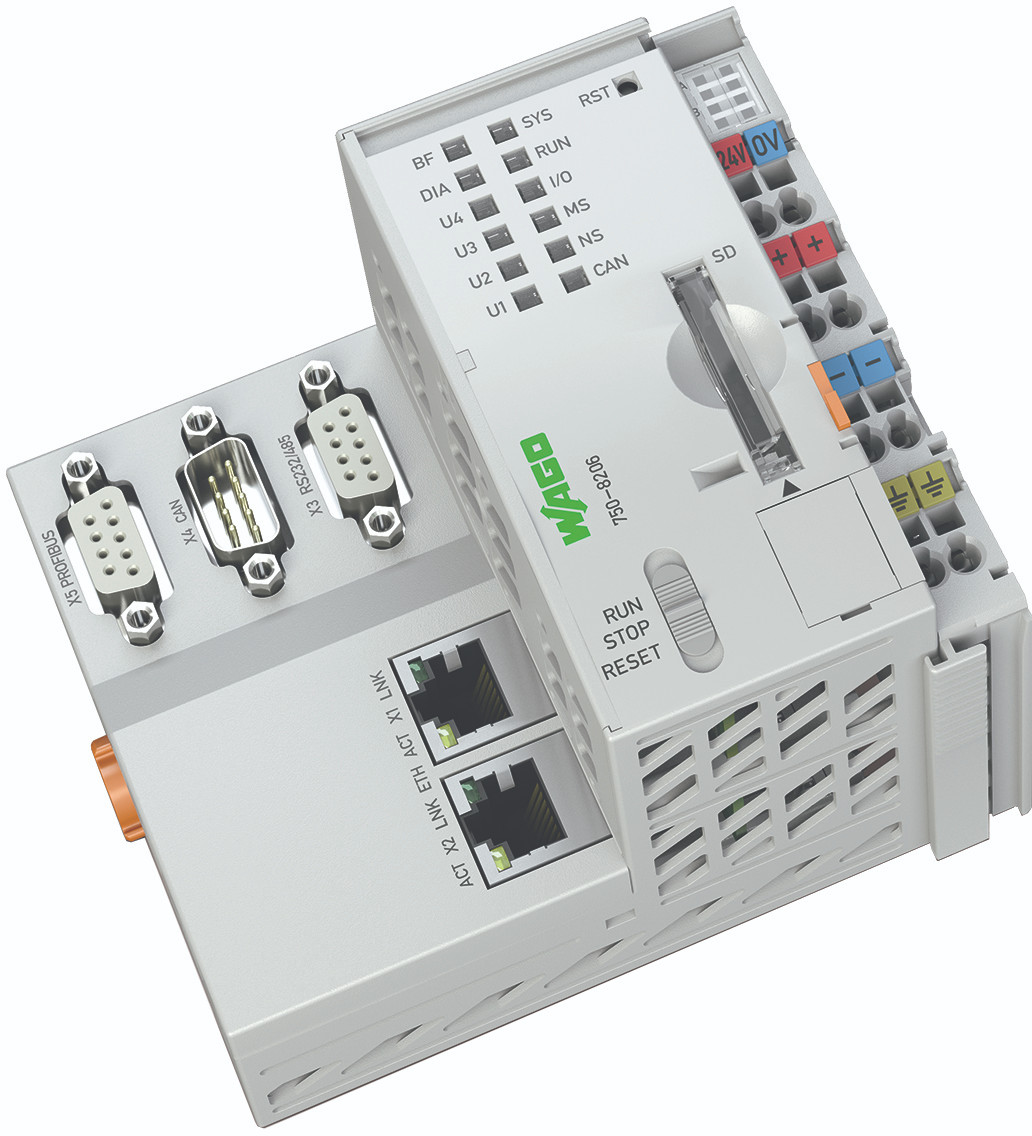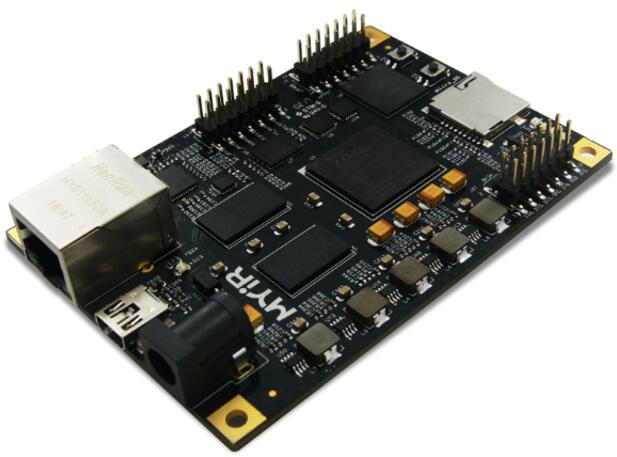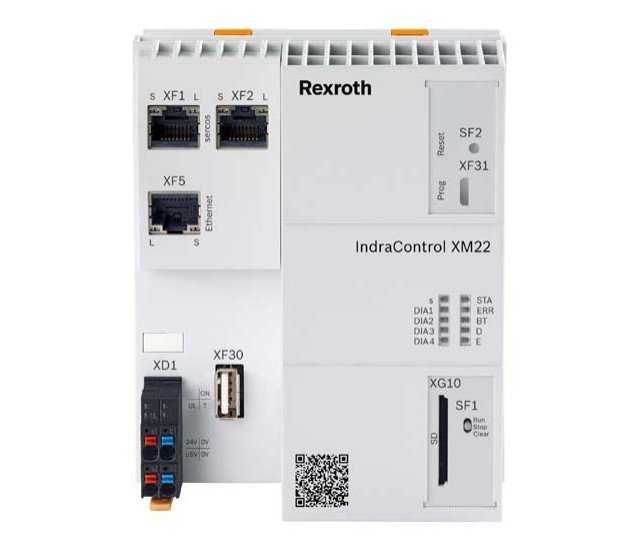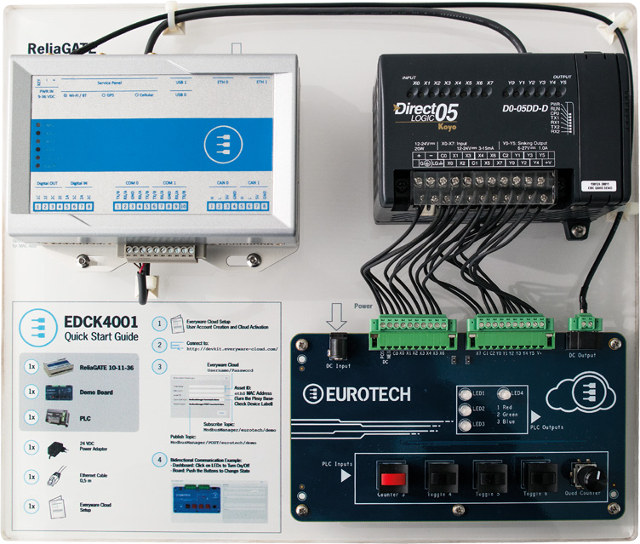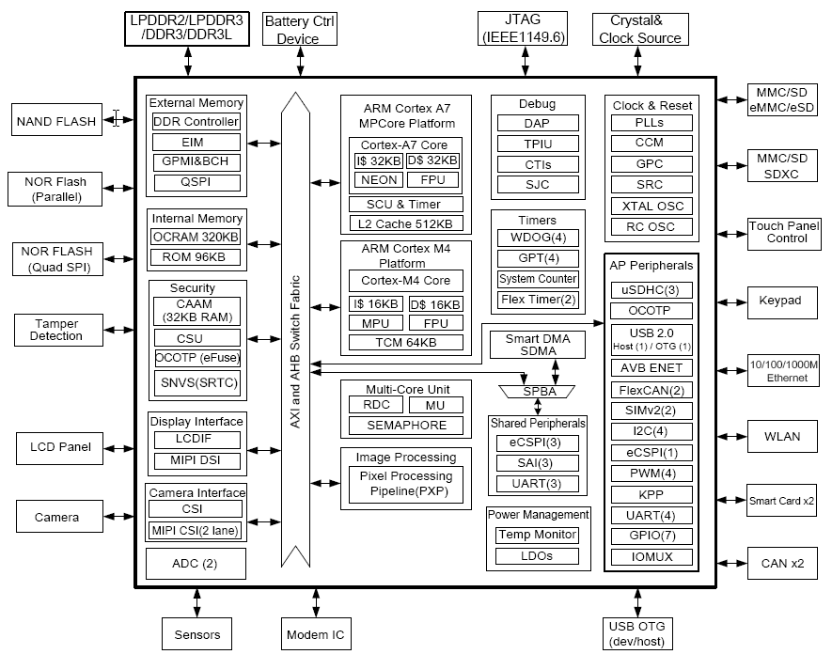As the Raspberry Pi Compute Module 4 is only expected for next year, companies are still launching products based on Raspberry Pi Compute Module 3+ (CM3+), and Sfera Labs has just introduced Iono Pi Max industrial computer powered by a Raspberry Pi CM3+ system-on-module. Housed in a DIN rail enclosure, the Linux controller offers Fast Ethernet, three USB ports, isolated CAN and serial boards, some analog I/Os, a relay, as well as a real-time clock (RTC), integrated UPS, and more. Iono Pi Max specifications: SoM compatibility Iono Pi Max 3+ – Already fitted with Raspberry Pi Compute Module 3+ (Lite, 8GB, 16GB, or 32GB eMMC version) Iono Pi Max Solo – Barebone model compatible with Raspberry Pi Compute Module 3, CM3 Lite, CM3+ 8GB/16GB32GB, and CM3+ Lite MCU – Microchip SAME54 Cortex-M4F microcontroller with 1 MB flash, 256 KB RAM connected to the Raspberry Pi module via I2C, USB and […]
Differences Between RS232, RS422 and RS485 (Video)
RS232, RS422, and RS485 are pretty old serial communication interfaces, and I was not even born when RS232 was specified in 1962, but there are still commonly used today in various applications such a points-of-sales, multi-meters, industrial equipment like PLC or HMI, as well as medical devices. Maxim Integrated shared a video – embedded at the end of this article – on social networks today explaining the fundamentals of serial transmitter devices and the differences between RS232, RS422, RS485, and Profibus. The video goes into more details with a glossary of terms, discussion of cable length and bitrate, hand-shaking, and auto-shutdown, but I’ll provide a quick summary below: RS232 supports one transmitter and one receiver, and operates between -15 and +15V (with input tolerance of up to -/+ 25V). A logic zero is between +3 and +15V and a logic one between -15 and -3V on the receiver side RS422 […]
WAGO PFC200 PLC Runs Embedded Linux, Supports Web and Mobile Visualization
WAGO is an international company with headquarters in Germany, designing electrical devices and automation systems. One of their latest product is WAGO PFC200 (PFC – Programmable Field Controller) designed for IIoT applications and running embedded Linux on an Arm Cortex A8 processor. WAGO PFC200 PLC key specifications & features: SoC – Arm Cortex A8 processor @ 600 MHz (CNXSoft: possibly Texas Instruments Sitara AM335x processor) System Memory – 256 MB RAM Storage – 256MB flash, SD card slot up to 32GB Fieldbus ports – 2x Ethernet; MODBUS, TCP/UD/RTU, CAN port, PROFIBUS Slave, Smart Grid and Serial RS-232/RS-485 Support for over 400 digital, analog, and specialty I/O modules Temperature Range – 0 to 50°C or -20 to 60°C depending on model All models support Modbus over TCP/UDP via their Ethernet port, but other Fieldbus ports are optional and depend on the exact model. The PLCs also come with a built-in Web […]
MYiR Introduces Z-Turn Lite Board Powered by Xilinx Zynq-7007S/Zynq-7010 SoC for $69 and Up
Xilinx launched a cost down version of their Zynq-7000 series with Zynq-7000S series SoC combining a single ARM Cortex A9 core with Artix FPGA fabric last year. We’ve already seen sub 100 Euros/Dollars board based on the new SoCs with ZynqBerry and MiniZed boards. MYiR Tech has now launched their own version, a cost-down version of their Z-Turn board, with Z-Turn Lite board featuring either the new cost-down Zynq-7007S or the “good old” Zynq-7010 SoC. Z-Turn Lite specifications: SoC Xilinx XC7Z007S-1CLG400C (Zynq-7007S) with a single ARM Cortex A9 core @ 667 MHz, Artix-7 FPGA fabric with with 23K logic cells, 14,400 LUTs, 66 DSP slices OR Xilinx XC7Z010-1CLG400C (Zynq-7010) with two ARM Cortex A9 cores @ 667 MHz, Artix-7 FPGA fabric with 28K logic cells, 17,600 LUTs, 80 DSP slices. System Memory – 512 MB DDR3 SDRAM (2 x 256MB, 32-bit) Storage – 4GB eMMC flash, 16MB QSPI flash, and […]
Bosch Rexroth IndraControl XM22 PLC Runs Ubuntu Core IoT, Supports Industrial Apps
Canonical wants you to run Ubuntu apps (snaps) for everything and on all types of devices, not only on your computer or smartphone. For example, base station apps (4G LTE, Bluetooth, LoRa…) will soon be able to run on LimeSDR board, the company is pushing for branded app stores, like the one for Orange Pi Boards, and now they have introduced the concept of App Logic Controllers (ALC) which are PLC devices running apps, thus bringing the concept of apps to the industrial world. Bosch Rexroth demonstrated the solution at Embedded World 2017 on their IndraControl XM22 PLC running Ubuntu Core. Let’s have a look at the hardware first with IndraControl XM22 specifications: Processor – Intel Atom E620 one core / two threads processor @ 600 / 1300 MHz (3.3W TDP) Memory – 512 MB RAM Storage – likely some flash + SD card slot Networking Connectivity – Gigabit Ethernet […]
Eurotech EDCK 4001 Everyware Device Cloud Development Kit Includes IoT Gateway, PLC and Demo Board
Eurotech has recently EDCK 4001 “Everyware Device Cloud Development Kit” for professionals who wish to experiment with and/or develop IoT/M2M applications. It includes the company’s ReliaGATE 10-11 IoT gateway powered by Texas Instruments Sitara AM3352 Cortex A8 processor, DirectLOGIC DL05 PLC, and a control/demo board with buttons, LEDs, and rotary encoder, as well as all necessary cables and accessories. ReliaGATE 10-11 gateway specifications: SoC – Texas Instruments AM3352 ARM Cortex A8 processor @ 800MHz Memory – 512MB DDR3 Storage – 4GB eMMC flash, user accessible micro SD Slot Connectivity – 2x 10/100Mbps, WiFi and Bluetooth, optional Cellular connectivity and GPS via ReliaCELL USB – 3x USB 2.0 host ports; noise and surge protected Serial – 2x RS-232/RS-485 (Surge protected, RS-485 termination and Fail-safe Resistors); 1x Serial Console TTL CAN – 2x CAN 2.0b bus with 5V/100mA power out Digital I/O – 2x Digital Input 5V (TTL), 1KV opto-isolated – 2x […]
HMP, Real-Time Linux and Xenomai – A Look at Three Options to Develop Real-Time Linux Systems on Application Processors
This is a guest post about Heterogeneous Multicore Processing (HMP), Real-Time Linux, and Xenomai to develop real-time Linux systems written by Guilherme Fernandes, Raul Muñoz, Leonardo Veiga, Brandon Shibley, all working for Toradex. Introduction Application processor usage continues to broaden. System-on-Chips, usually powered by ARM Cortex-A cores, are taking over several spaces where small ARM Cortex-M, and other microcontroller devices, have traditionally dominated. This trend is driven by several facts, such as: The strong requirements for connectivity, often related to IoT and not only from a hardware point of view but also related to software, protocols, and security The need for highly interactive interfaces such as multi-touch, high-resolution screens, and elaborate graphical user interfaces; The decreasing price of SoCs, a consequence of its volume gain and new production capabilities. Typical cases exemplifying the statement above are the customers we see every day starting a product redesign upgrading from a microcontroller […]


